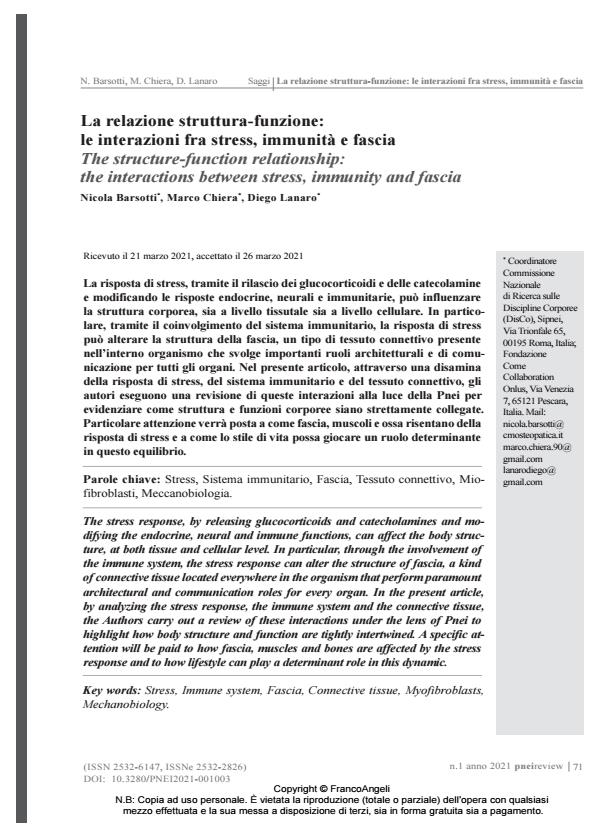The structure-function relationship: the interactions between stress, immunity and fascia
Journal title PNEI REVIEW
Author/s Nicola Barsotti, Marco Chiera, Diego Lanaro
Publishing Year 2021 Issue 2021/1
Language Italian Pages 14 P. 71-84 File size 1205 KB
DOI 10.3280/PNEI2021-001003
DOI is like a bar code for intellectual property: to have more infomation
click here
Below, you can see the article first page
If you want to buy this article in PDF format, you can do it, following the instructions to buy download credits

FrancoAngeli is member of Publishers International Linking Association, Inc (PILA), a not-for-profit association which run the CrossRef service enabling links to and from online scholarly content.
The stress response, by releasing glucocorticoids and catecholamines and modifying the endocrine, neural and immune functions, can affect the body structure, at both tissue and cellular level. In particular, through the involvement of the immune system, the stress response can alter the structure of fascia, a kind of connective tissue located everywhere in the organism that perform paramount architectural and communication roles for every organ. In the present article, by analyzing the stress response, the immune system and the connective tissue, the Authors carry out a review of these interactions under the lens of Pnei to highlight how body structure and function are tightly intertwined. A specific attention will be paid to how fascia, muscles and bones are affected by the stress response and to how lifestyle can play a determinant role in this dynamic.
Keywords: Stress, Immune system, Fascia, Connective tissue, Myofibroblasts, Mechanobiology.
Nicola Barsotti, Marco Chiera, Diego Lanaro, La relazione struttura-funzione: le interazioni fra stress, immunità e fascia in "PNEI REVIEW" 1/2021, pp 71-84, DOI: 10.3280/PNEI2021-001003